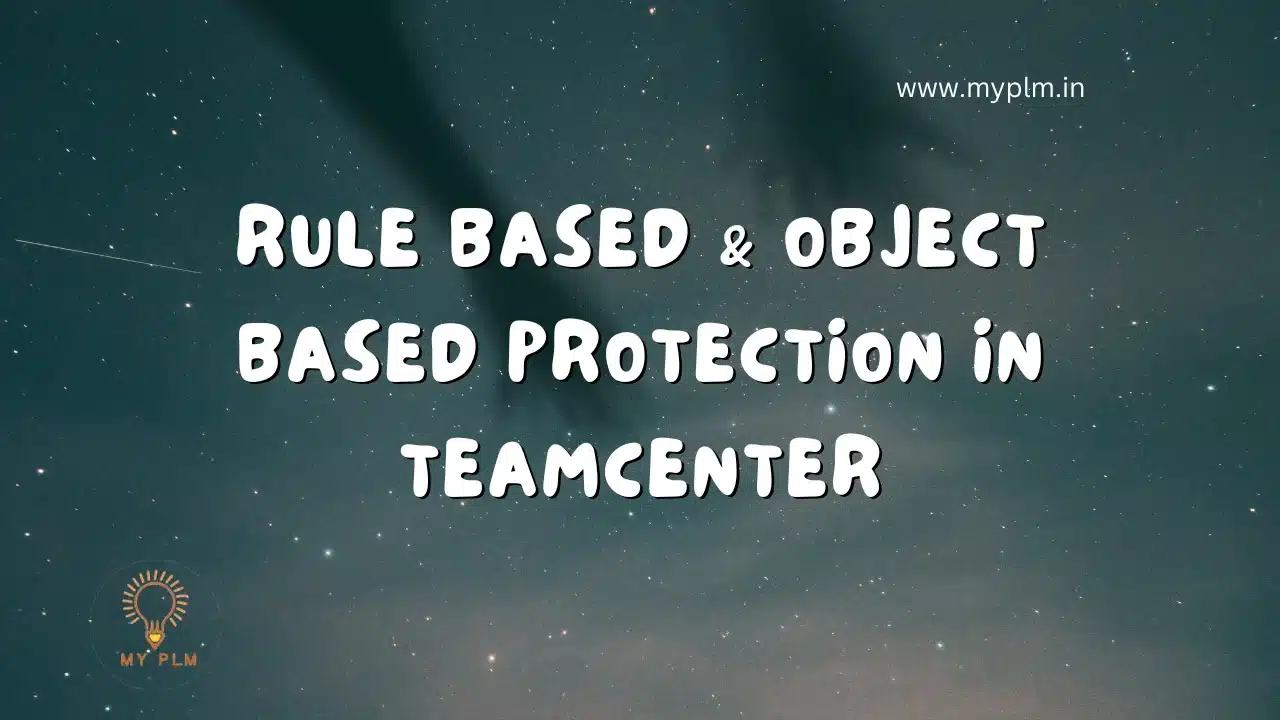In the dynamic world of product lifecycle management (PLM), safeguarding sensitive data and maintaining controlled access is paramount. Teamcenter, a leading PLM solution, employs advanced security measures to ensure the confidentiality, integrity, and availability of valuable product information. Two crucial components of Teamcenter’s security framework are Rule-Based Protection and Object-Based Protection, each contributing to a robust defense against unauthorized access and data breaches.
Table of Contents
Understanding Rule-Based Protection: in Teamcenter
Rule-based protection is a security mechanism within Teamcenter that allows organizations to define access control policies based on specific rules or conditions. These rules govern user permissions, determining who can access, modify, or delete certain data within the PLM system. This granular level of control ensures that only authorized personnel can perform designated actions, minimizing the risk of unauthorized data exposure.
Key features of Rule-Based Protection: in Teamcenter
Conditional Access Control: Rule-based protection enables organizations to set up conditional access controls based on user roles, responsibilities, or attributes. For example, certain design modifications might be restricted to a select group of engineers, while viewing capabilities may be granted to a broader audience.
Workflow Integration: Integrating with Teamcenter workflows, Rule-Based Protection ensures that access privileges align with the progression of product data through different stages of the lifecycle. This integration helps maintain data integrity and prevents unauthorized interventions during critical phases.
Dynamic Policy Enforcement: Rules can be dynamically enforced, adapting to changes in organizational structure, project requirements, or personnel assignments. This flexibility is crucial in large enterprises where roles and responsibilities may evolve.
Understanding Object-Based Protection: in Teamcenter
Object-based protection complements Rule-Based Protection by focusing on securing specific data objects within Teamcenter. This approach applies protection directly to individual items, datasets, or documents, ensuring more fine-grained control over access rights.
Key features of Object-Based Protection: in Teamcenter
Data-Level Security: Object-based protection provides security at the data level, allowing organizations to define access permissions on a per-object basis. This is particularly useful when dealing with susceptible documents, designs, or intellectual property that require a higher level of scrutiny.
Isolation of Critical Information: Critical data objects, such as proprietary designs or regulatory documents, can be isolated and protected independently. This ensures that even if general access permissions are granted to a wider user group, the most sensitive information remains secure.
Version Control Integration: By integrating with Teamcenter’s version control system, Object-Based Protection ensures that access rights are maintained consistently across different versions of a particular data object. This prevents unauthorized alterations or viewing of outdated information.
Conclusion
In the ever-evolving landscape of PLM, Rule-Based Protection and Object-Based Protection are essential pillars of Teamcenter’s security architecture. Together, they empower organizations to enforce comprehensive access controls, mitigate the risk of data breaches, and foster a secure and collaborative environment for managing the complete product lifecycle. As industries continue to grapple with the challenges of data security, Teamcenter’s commitment to robust protection mechanisms positions it as a reliable choice for enterprises seeking to safeguard their most valuable assets.
Recent Post
Exploring the Power of Tiles in Teamcenter’s Active Workspace Client
Understanding the Contrast: Volume vs. Database in Teamcenter
Exploring Teamcenter: The Central Hub for Product Lifecycle Management
Understanding Item Revision in Teamcenter: A Comprehensive Guide
Unlocking Efficiency and Precision: Understanding Workflow Designer in Teamcenter
Understanding PLM (Product Lifecycle Management): A Comprehensive Guide
Demystifying BMIDE in Teamcenter: Empowering Effective PLM Solutions
Understanding Databases and the Role of Database Software in Teamcenter
Unveiling Teamcenter’s Active Workspace: Enhancing Collaboration and Efficiency
Understanding Organizations in Teamcenter: Building Efficient Work Structures
Demystifying Datasets in Teamcenter: A Comprehensive Guide
A Step-by-Step Guide to Installing Teamcenter Software
Unveiling the Power of Rich Clients in Teamcenter: A Comprehensive Overview
